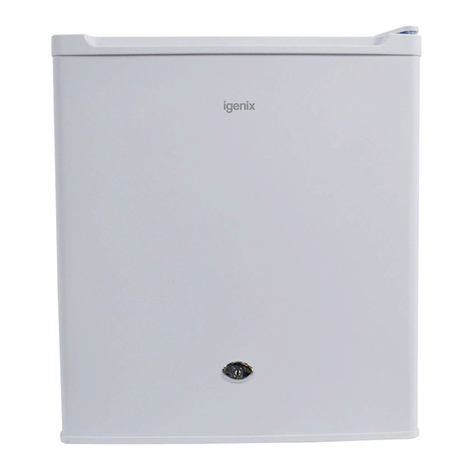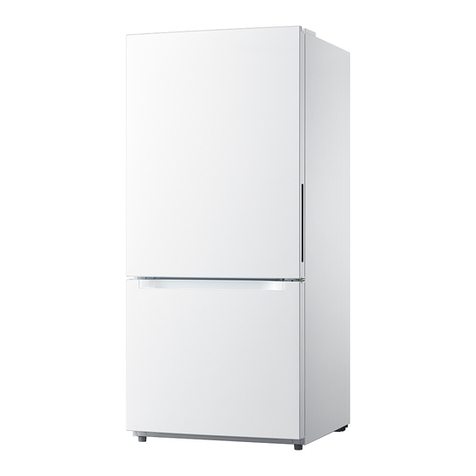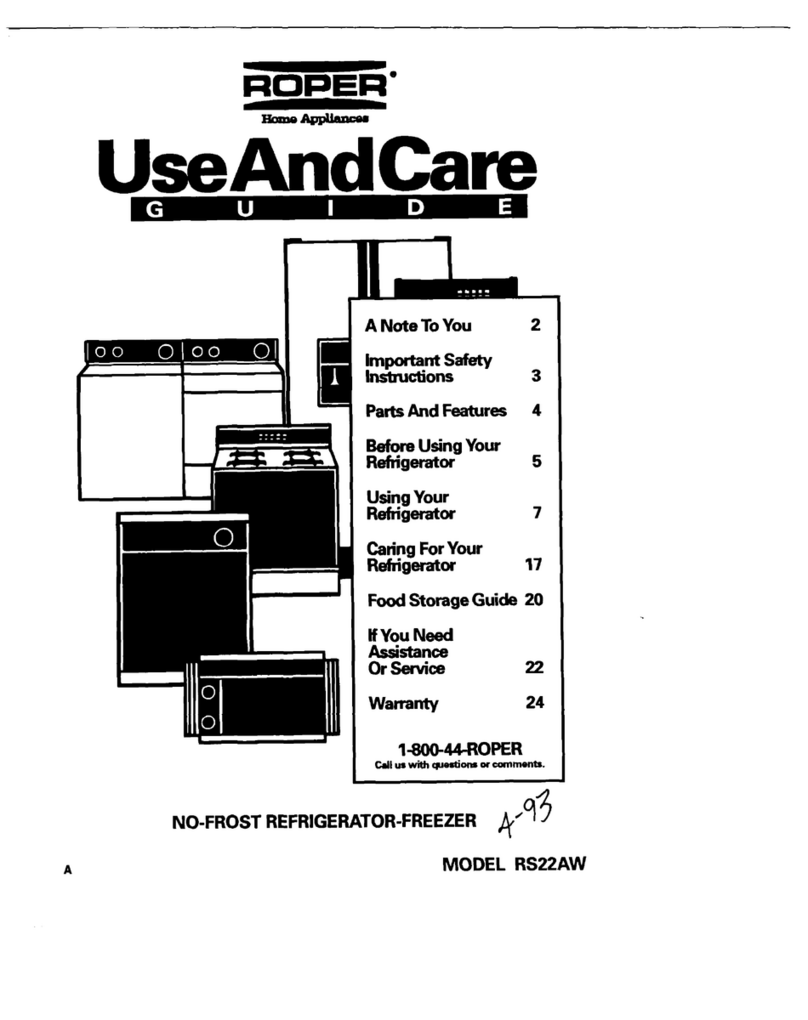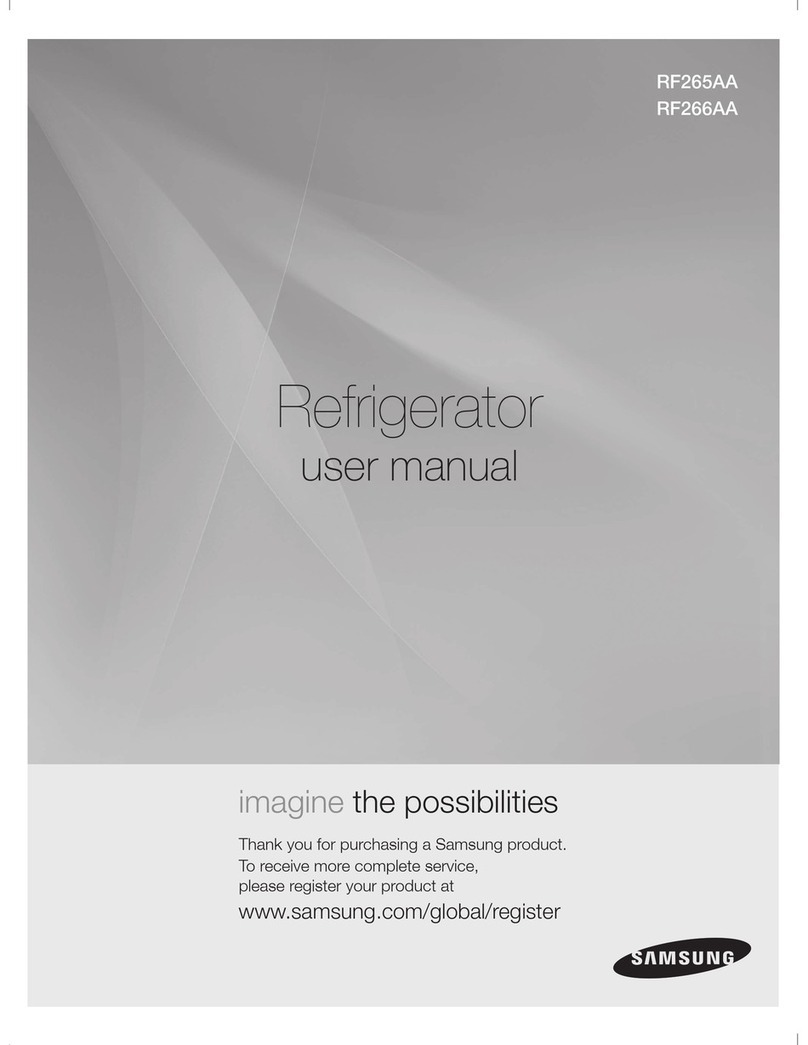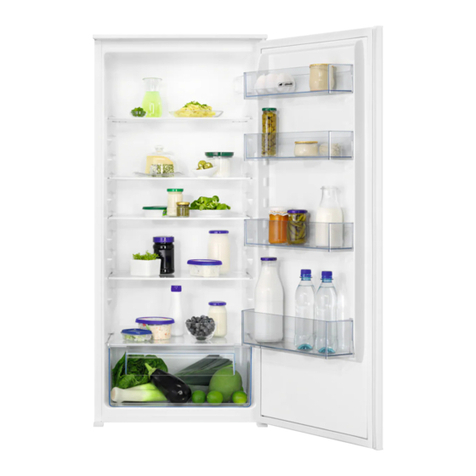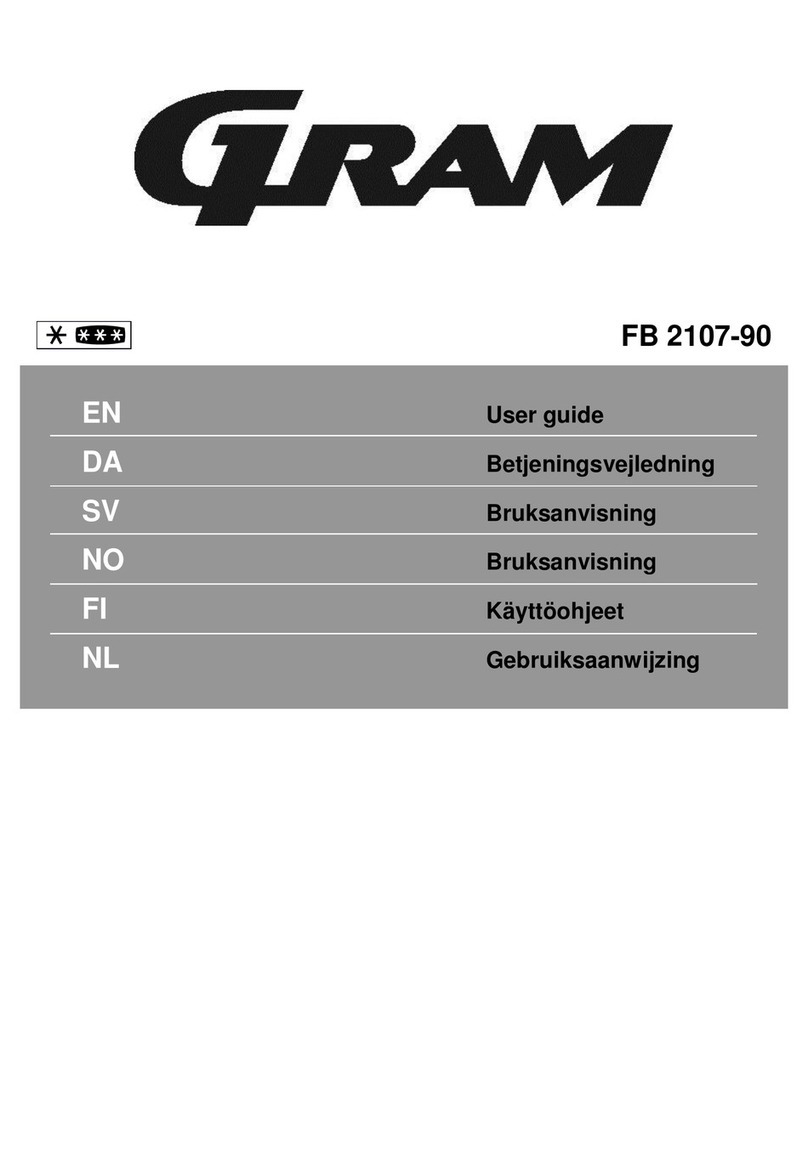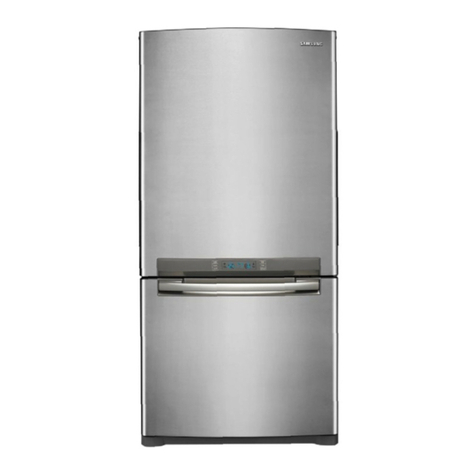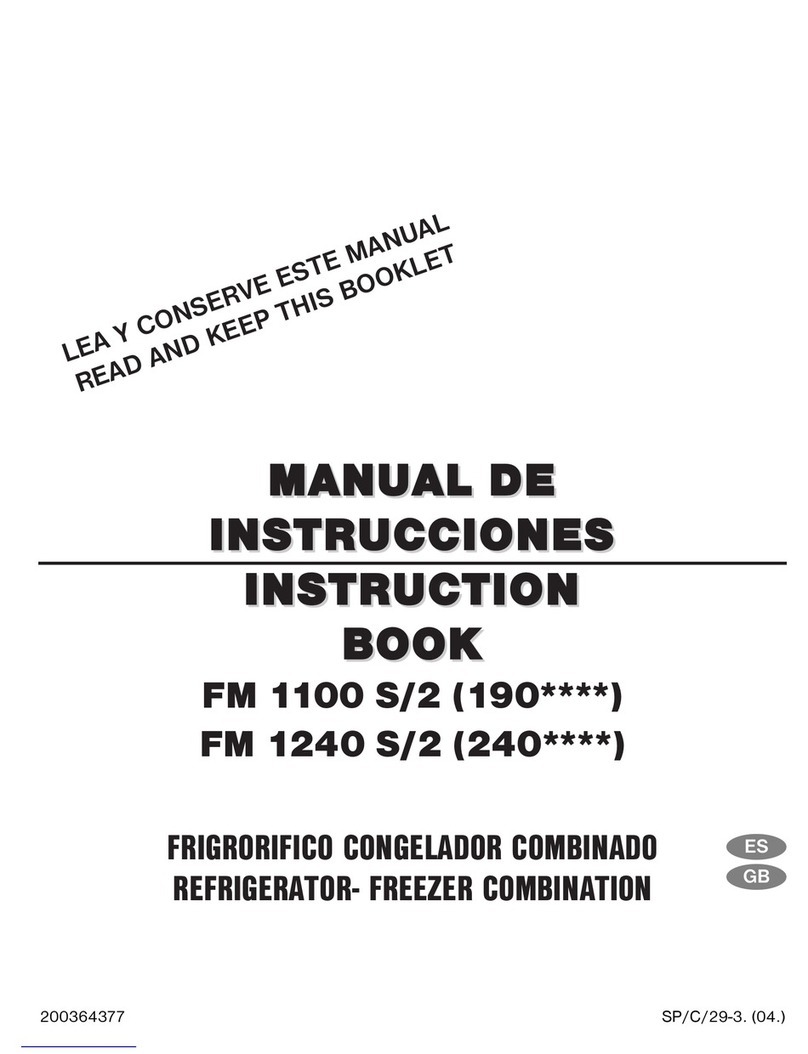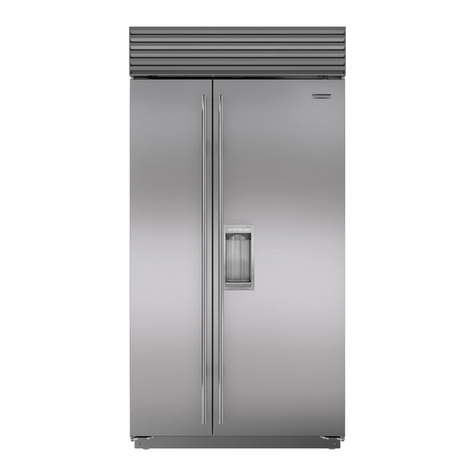iGenix IG350R User manual

Please read these instructions carefully before use and retain for future reference
Before switching on your appliance,
always check for any damage which may have been caused in transit
IG350R
Batch code:
50cm Under Counter Fridge with 4* Ice Box White
USER MANUAL

2
CONTENTS
Important Safety Instructions...............................................3-6
Specication .................................................................................7
Appliance Overview...................................................................8
Installation...............................................................................9-10
Operating Instructions...................................................... 11-12
Cleaning & Maintenance ................................................... 13-15
Troubleshooting Guide ........................................................... 16
Fuse Replacement.................................................................... 17
Disposal Information............................................................... 17
Terms & Conditions & Warranty Information............. 18-19

3
IMPORTANT SAFETY INSTRUCTIONS
Read and follow all of the instructions even if you feel you are
familiar with the product, and nd a place to keep this manual handy
for future reference.
Important: This product is intended for domestic use only, for
food refrigeration storage only.
When using electrical appliances, basic safety precautions should
always be followed:
• Do not operate the appliance with a damaged cord or plug, after
it malfunctions or has been dropped or damaged in any way.All
electrical repairs must be carried out by a qualied electrician.
Inadequate repairs may result in a major source of danger for the
user and invalidate the warranty.
• The operating voltage of the appliance is 220-240V at 50Hz.
Check the voltage of the appliance matches the household
voltage on the rating label and specication for further details.
• Use of an extension cord is not recommended with this product.
• This appliance can be used by children aged from 8 years
and above if they have been given supervision or instruction
concerning the use of the appliance in a safe way and understand
the hazards involved.
• Cleaning and user maintenance shall not be made by children
• Keep the appliance and its cord out of reach of children.
• Children shall not play with the appliance.
• This appliance can be used by persons with reduced physical,
sensory or mental capabilities or lack of experience and
knowledge if they have been given supervision or instruction
concerning use of the appliance in a safe way and understand the
hazards involved.
• Always unplug the appliance before attempting to move.When
disconnecting from the electricity supply, pull the plug and not
the cord.
• This product is for indoor use only.

4
WARNING: The appliance is heavy and care is needed when
unpacking and moving it. Get extra help and only hold the
appliance by the casing – never hold by the door or the trim.
• Do not store explosive substances such as aerosol cans with a
ammable propellant in this appliance.
• Always keep the ventilation openings clear of obstruction. Should
they become blocked, clear them straight away.
• The refrigerant of this product is R600a which is ammable.
Ensure when moving the appliance or during installation that the
cooling system does not get damaged.
Important: Always allow 12 hours before turning on the appliance
to allow the coolant gases time to settle after the unit is in place.
WARNING: Risk of child entrapment.
Before disposal of the old appliance, make sure that any locking
mechanisms have been broken off, doors have been removed
but shelves have been left in so that children cannot easily climb
inside.Also remove the plug so the appliance is unusable.

5
WARNING: Risk of re / ammable materials.
• When positioning the appliance, ensure the supply cord is
not trapped or damaged.
• Do not locate multiple portable socket-outlets or portable
power supplies at the rear of the appliance.
• Children aged from 3 to 8 years are allowed to load and
unload refrigerating appliances.
• To avoid contamination of food, pay attention to the
following:
• opening the door for long periods can cause a signicant
increase of the temperature in the compartments of the
appliance;
• clean regularly surfaces that can come in contact with
food and accessible drainage systems;
• clean water tanks if they have not been used for 48 hours;
ush the water system connected to a water supply if
water has not been drawn for 5 days;
• store raw meat and sh in suitable containers in the
refrigerator so that it is not in contact with or drip onto
other food;
• two-star frozen-food compartments are suitable for
storing pre-frozen food, storing or making ice-cream and
making ice cubes;
• one-, two- and three-star compartments are not suitable
for the freezing of fresh food;
• if the refrigerating appliance is left empty for long periods,
switch off, defrost, clean, dry and leave the door open to
prevent mould developing within the appliance.

6
Refrigerator
location
Type of food
Fridge door • Foods with natural preservatives, such as jams,
juices, drinks, condiments.
• Do not store perishable foods.
Crisper bin (salad
bin)
• Fruits, herbs and vegetables should be placed
separately in the crisper bin.
• Do not store bananas, onions, potatoes, garlic in
the refrigerator.
Fridge shelf –
bottom
Chiller bin
• Raw meat, poultry, sh (for short-term storage)
Fridge shelf –
middle
• Dairy products, eggs
Fridge shelf – top • Foods that do not need cooking, such as ready-
to-eat foods, deli meats, leftovers.
Freezer drawer/
shelf
• Foods for long-term storage.
• Bottom drawer/shelf for raw meat, poultry, sh.
• Middle drawer/shelf for frozen vegetables, chips.
• Top drawer/shelf for ice cream, frozen fruit, fro-
zen baked goods.
The table below contains general guidelines on the storage of
food in the refrigerator.

7
SPECIFICATION
Ambient Room Temperature Limits
Trade Mark Igenix
Model Number IG350R
Category Type Under Counter Fridge
Energy Efciency Class A+
EU Eco-Label Award N/A
Energy Consumption 0.36 kWh/24H
131 kWh/annum
Freezing Capacity 2
Fridge Storage Net Volume (Litre) 83L
Freezer Storage NetVolume (Litre) 14L
Refrigeration System (Frost Free, Static,Totally
No Frost)
Static
Climate Class N/ST
This appliance is intended to be used at an ambient temperature between “16°C ” (lowest
temperature) and “38°C”(highest temperature)
Noise Emission 40 dB
Built-in Appliance No
Voltage 220-240V
Wattage Power 70 W
Frequency 50Hz
Power Source AC
Refrigerant R600a
Product Dimensions (HxWxD) 845 x 501 x 540 mm
Climate Class Symbol Ambient Temperature °C
Extended Temperate SN + 10 to + 32
Temperate N + 16 to + 32
Subtropical ST + 16 to + 38
Tropical T + 16 to + 43

8
APPLIANCE OVERVIEW
4* Freezer Box
Door
Shelves
Temperature
Control
Shelf
Salad
Crisper

9
INSTALLATION
Location and Air Circulation
When selecting a position for your appliance, you should make sure the oor is
at and rm and the room is well ventilated with an average room temperature
of between 16°C and 38°C. If the room temperature drops below this, your
fridge may stop working properly.
Locate the appliance away from sources of heat e.g cookers, radiators, direct
sunlight as extreme temperatures will effect how efciently it works.
Also avoid direct sunlight as it may increase the electrical consumption, extreme
cold ambient temperatures may also cause the unit to not perform properly.The
appliance is not designed for use in a garage or outdoor installation; do not drape
the unit with a covering.
Never place the unit in a wall recess or tted cabinets or furniture as this will
not allow adequate ventilation and cause a potential re hazard. When installing
the unit, ensure that 20mm of free space is left at both sides, 20mm at the rear
and 30mm at the top of the unit.This will allow cold air to circulate around and
improve efciency of the cooling process.
Providing you follow the recommended ventilation requirements you will:
• Increase the life of the appliance.
• Minimise the risk of condensation on the outside of the appliance.
• Minimise the running costs.
• Minimise operating noises caused by vibration.
Levelling
Once the appliance is positioned in its nal location, it can be leveled using the
adjustable feet at the front of the unit until they are rmly placed on the oor.
Correctly levelling the unit will stop any rocking or vibration and keep the door
aligned, which helps the fridge run reliably and efciently.

10
Door Fitting
The freezer door can be tted to open to either the left or the right depending
on the location.The appliance must be tilted and supported in order to carry this
out. It is therefore advisable to get some help during this procedure. Take care
when tting and tightening the screws.
Tools required: Phillips style screwdriver / Flat bladed screwdriver / Hexagonal
spanner
1. Tilt the unit slowly towards the rear and prop it securely.Two people are
required to tilt the unit during the door reversal process.
2. Remove the 2 screw covers rst, then undo the screws underneath.
3. Remove the 2 screws on the back.
4. Lift the top cover away from the fridge.
5. Remove the 3 screws, then remove the upper hinge that holds the door
in place. Lift the door and place it on a padded surface to prevent it from
scratching.
6. Swap the bottom bushing and bottom bushing cap of the upper door.The
bottom bushing key must be in the correct position to allow it to be inserted
correctly.
7. Remove the lower screws, hinge bracket and adjustable feet from the unit
bottom.
8. Remove the screw-type adjustable feet from another side of the unit bottom
and transfer it to the corresponding position on the opposite side of the unit
bottom.
9. Reattach the 2 lower screws, hinge bracket and adjustable feet to the
opposite side of the unit bottom. Loosely secure.
10. Carefully set the upper door back into place. Ensure the freezer door is
aligned horizontally and vertically so that the seals are closed on all sides
before nally tightening the top hinge. Insert the hinge bracket and screw it
to the top of the unit.
11. Use a spanner to tighten it if necessary.
12. Put the top cover back and x it in place with the screws.
13. With the door closed, check that the door is aligned horizontally and
vertically and that the seals are closed on all sides before nally tightening
the bottom hinge. Re-adjust the leveling feet as needed.

11
OPERATING INSTRUCTIONS
• This appliance must be left to stand in an upright position for at least 5 hours
before being switched on for the rst time.
• Before placing food in the appliance turn on and wait 24 hours, this is to
make sure it is working correctly and also to allow for the optimal internal
temperature to be reached.
• The interior of the appliance needs to be cleaned prior to use by wiping with
a soft cloth and using warm water.Wipe the appliance completely dry before
replacing any shelves or salad drawers.
• Once dry, plug the appliance into the mains socket.
• Avoid opening the door for long periods or unnecessarily.
• To maintain adequate air circulation, do not over ll the appliance.
• Allow hot or warm foods to cool to room temperature before storing in the
appliance.
Using the Appliance
• When operating the appliance for the rst time, run it without loading any
food until it automatically stops at the desired temperature. Usually this takes
2 or 3 hours, then set the dial at the setting you desire and add the food.
• The temperature can be adjusted by turning the thermostatic dial.A medium
setting is the most suitable for general operation.
• Defrost the freezer compartment whenever the layer of frost on the surface
of the evaporator reaches 3-4mm.
Noises Inside the Appliance
You may notice that the unit makes some unusual noises. Most of these are
perfectly normal, but you should be aware of them.
These noises are caused by the circulation of the refrigerant liquid in the cooling
system. It has become more pronounced since the introduction of CFC free
gases.This is not a fault and will not affect the performance of your unit.This is
the compressor motor working, as it pumps the refrigerant around the system.

12
Using the Appliance Effectively
• Take note of foods best before / use by instructions and follow the maximum
storage guidelines on the packaging.
• Keep foods covered to help restrain moisture and to help prevent odour
/ avour transference. Plastic bags, aluminium foil, plastic food wrap and
containers with lids are ideal.
• Avoid opening the foor for long periods or unnecessarily.
• Allow hot or warm food to cool down in covered containers before placing
in the freezer. Hot food will raise the temperature in the fridge and cause the
compressor to work more.
Storing Food in the Appliance
• Pack and store cooked and fresh food separately.
• Wrap raw or defrosting meats and poultry in polythene or foil and ensure
they are stored below any cooked meats to avoid contamination from any
juices that may drip.
• Empty left over tinned food into plastic containers.
• Position food in the fridge to allow cold air to circulate freely, making sure
that nothing touches the back wall of the fridge.

13
CLEANING AND MAINTENANCE
Switch off the electrical supply and remove the plug from the mains socket
before cleaning.
Interior
Note: The interior of the refrigerator should be cleaned regularly to avoid odor.
1. Remove all food from the appliance and cover to help keep cool.
2. Remove all the shelves and salad crisper carefully from the appliance and
wash in warm clean water with a soft cloth and dry thoroughly. Never
replace the shelves or salad crisper into the appliance if wet.
3. Use a soft cloth or sponge to clean the inside of the refrigerator, with two
tablespoons of baking soda and a quart of warm water. Rinse with water and
wipe clean.
4. For areas that are difcult to clean in the refrigerator (such as narrow
sandwiches, gaps or corners), it is recommended to wipe them regularly with
a soft rag, soft brush, etc. and when necessary, combined with some auxiliary
tools (such as thin sticks) to ensure no contaminant accumulation in these
areas.
5. Open the door and allow the interior to dry naturally before replacing the
shelves and salad crisper.
6. Plug in and switch on and allow the temperature in the appliance to drop
back to an adequate temperature.
7. Replace the food in the appliance.
Important: Avoid getting water into the electric components of the appliance
i.e. the thermostat, as this may damage your appliance.
Exterior
• Use a clean, soft cloth dampened in soapy water to wipe the exterior surface
of the appliance and dry thoroughly.
• Use a vacuum cleaner to remove dust from underneath the appliance and
from around the compressor which is situated at the back of the appliance,
regularly to maintain adequate ventilation. Use caution not to damage the
coolant system.
Important: Do not use abrasive cloths, powders, household cleaners, bleach or
wax polish to clean the appliance as these can leave a smell in the appliance and
can damage the exterior.

14
Door Seal
Check the door seal regularly to make sure there are no debris. Use a clean,
damp soft cloth to wipe the door seal and in between the creases, avoid
damaging the door seal as this will affect the performance of your appliance.
Going Away
If you are going away and do not want to leave the appliance left on, switch off at
the socket and remove the plug from the mains sockets ensuring not to pull the
cord.
Remove any food and follow the cleaning instructions in this section.
Note: Leave the door ajar as this will prevent odours accumulating in the fridge
and will allow the unit to dry completely.
Power Cut
In the event of a power cut keep the appliance door closed to maintain the
temperature inside.
Operating Sounds
The cooling gas which circulates in the cooling circuit may make a slight noise
(bubbling sound) even when the compressor is not running. Do not worry this is
quite normal.
If these sounds are different check that:
• The appliance is well levelled
• Nothing is touching the rear.
• The stuffs on the appliance are vibrating.
Changing the Light
The light is an energy efcient, long life LED. Therefore it should not need
replacing throughout the life of the product, however if it does, it is advised to
contact a qualied technician.
1. Remove the light cover
2. Loosen the thermostat knob and fastening screw, and remove the thermostat
box assembly
3. Remove the connector
4. Remove the light

15
Defrosting
Frost might build up in the unit after it has been used for a period of time. Scrape
away the frost using a plastic scraper (not included).
Important: Do not use a metal or sharp instrument to scrape away the frost;
do not use any electrical appliances to aid defrosting.
Choose a time when the stock of frozen food is low, follow these procedures:
1. Take out the food, turn the thermostat to the off position and leave the door
open. Ideally, the frozen food should be put into another freezer. If this is not
possible, wrap the food in several sheets of newspaper or large towels and
then a thick blanket to keep it cool.
2. Place a dry towel at the foot of the unit or drip tray.After the frost has
melted, discard the water and clean up. Wring out the soaked towel as
needed.
3. When defrosting is complete, clean your unit’s interior and exterior and
restart by turning its thermostat to the desired setting.

16
TROUBLE SHOOTING GUIDE
If you experience difculties with the appliance, please check the suggestions below before contacting
customer services on 01473 271272:
Problem Possible Cause Solution
The appliance does not work. Not properly plugged into the
mains wall socket.
Plug in rmly.
No electricity in the mains wall
socket.
Check fuse or breaker.
The door is not closed properly. Make sure the door is properly aligned
and creates a seal around the door.
The appliance is making a lot
of noise.
The pipe work is touching the wall
or skirting board.
Pull the appliance forward so it does
not touch the wall or skirting board.
The appliance has not been
levelled properly.
Adjust the feet at the front of the
fridge, ensuring they are in rm contact
with the oor
The temperature in the fridge
is too warm.
The thermostat is set too high for
the environment.
Turn the thermostat to a higher
setting.
The appliance is too close to a
heat source.
Move the appliance away from any heat
sources and out of direct sunlight.
There is not enough ventilation
around the appliance.
Ensure there is a minimum gap of
10mm at each side and 30mm above
the appliance.
The door is not closed properly. Ensure nothing is protruding past
the cavity. Check that the seal is not
damaged.
The temperature in the fridge
is too cold.
The thermostat is set too low. Turn the thermostat to a lower setting.
There is water beneath the
salad crisper and on the oor.
There is something touching the
interior back wall of the appliance.
Ensure that no food is touching the
interior back wall of the appliance.
Ice builds up rapidly inside of
the appliance.
The door is not closed properly. Check to see if anything is stopping the
door from closing properly.
Food and liquids are not covered. Ensure all food is covered to prevent a
build up of moisture in the fridge.

17
DISPOSAL INFORMATION
The European Directive 2012/19/EU on Waste Electrical and
Electronic Equipment (WEEE), requires that old household
electrical appliances must not be disposed of in normal unsorted
municipal waste.
Old appliances must be collected separately in order to optimise
the recovery and recycling of the materials they contain and reduce the impact
on human health and the environment.
The crossed out “wheeled bin” symbol on the product reminds you of your
obligation, that when you dispose of the appliance it must be separately collected.
Consumers should contact their local authority or retailer for information
concerning the correct disposal of their old appliance.
MAINS PLUG FUSE REPLACEMENT Fuse Cover
Fuse Replacement (Class I)
This appliance must be eathed. Remove the fuse cover
with a small at head screw driver. Take out the fuse and
replace with a new fuse of the same Amp. Replace the
fuse cover and push back into place.

18
lgenix Warranty Terms & Conditions
This product is guaranteed for a period of 12 months as standard from the date of purchase
against mechanical and electrical defects.You can extend your warranty for a further 12 months by
registering your product.
Upon registration we will cover your product for a period of 24 months from the original purchase
date against any mechanical or electrical defects.
To qualify for the warranty, the product must be used for domestic household use only and in
accordance with the instructions in the user manual.Any misuse of the product will result in the
warranty being void.
The warranty does not cover accidental damage, misuse, neglect, tampering or incorrect adjustment
or installation.
The warranty will be rendered invalid if the product is resold, has had its serial number removed
(or has an invalid serial number), or if an unauthorised person has carried out any repairs or
alterations.
The warranty does not cover accessories or consumable parts that require replacement under
normal use. This includes shelving, dials, lters, belts and trays etc.
In the unlikely event of a breakdown please refer to the Troubleshooting guide in your user manual
and check all plugs, fuses and the electricity supply.
If you still require assistance please contact our Customer Service department on
01473 271 272 or write to us at the following address:
Customer Service Department
38 Bluestem Road, Ransomes Europark
Ipswich, IP3 9RR
Please quote the Product Code which begins ‘IG’ or ‘DF’ and the Batch Coder beginning ‘5’ and give
details of the exact fault.We will then decide whether to repair or replace the item.
Before we arrange the repair or replacement you will be required to return a copy of your proof
of purchase. Please retain your original.
If an item is replaced within the agreed warranty period, the warranty for the replacement item will
be calculated from the purchase date of the original.
In the event that the product is inspected and no fault is found or the product is not within the
warranty period you will be charged for the repair and any carriage costs.

19
Thank you for choosing lgenix
As a valued customer we would like to offer you a FREE 2 year warranty to cover your product
against any electrical or mechanical defects.
This means that in the unlikely event you develop a fault or problem with your product we will
happily repair or replace the item free of charge.
To qualify for the 2 year warranty you must register your product within 30 days of purchase.The
full Terms & Conditions of our warranty policy are shown on the opposite page.They are also
available on our website. www.igenix.co.uk

38 Bluestem Road, Ransomes Europark, Ipswich, IP3 9RR
Tel. 01473 271 272
Disclaimer: Igenix operate a policy of continual improvement and development.
We therefore reserve the right to change/alter the specication and appearance of our appliances without prior notice.
All diagrams and images shown in this manual are for illustration purposes only.
Table of contents
Other iGenix Refrigerator manuals
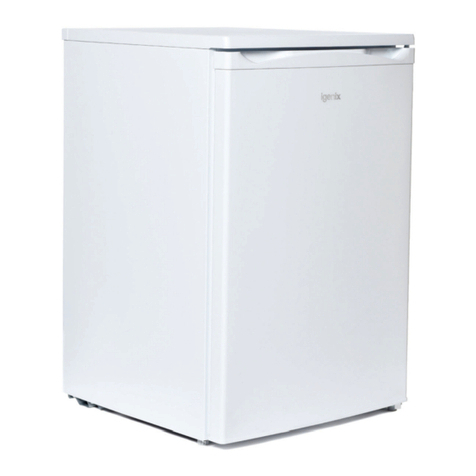
iGenix
iGenix IG255W User manual
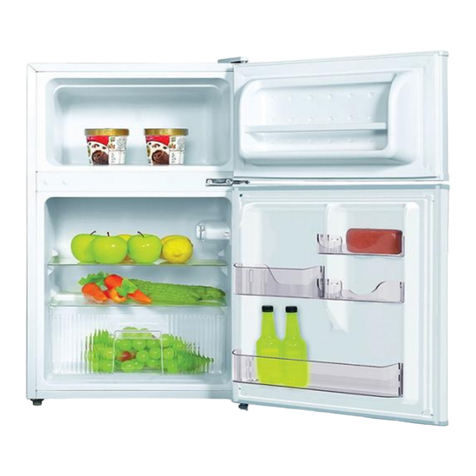
iGenix
iGenix IG347FF User manual
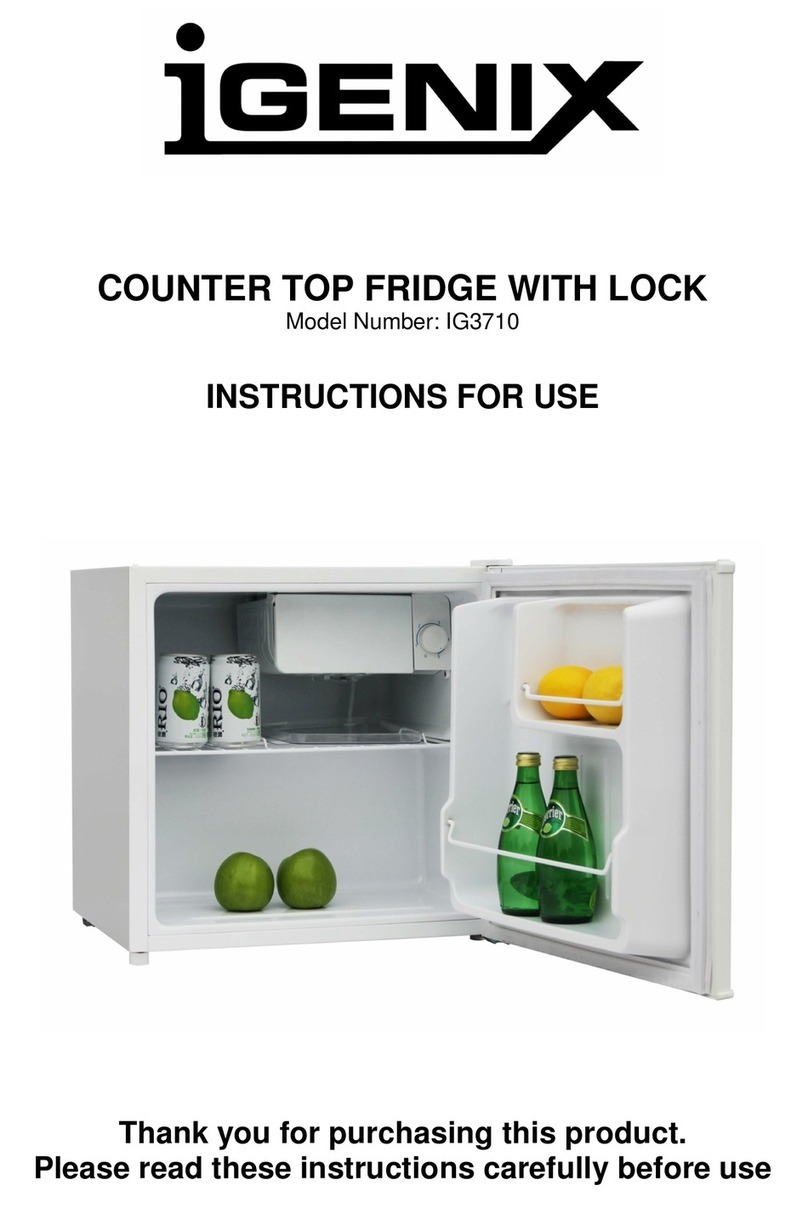
iGenix
iGenix IG3710 User manual

iGenix
iGenix IG3711BL User manual
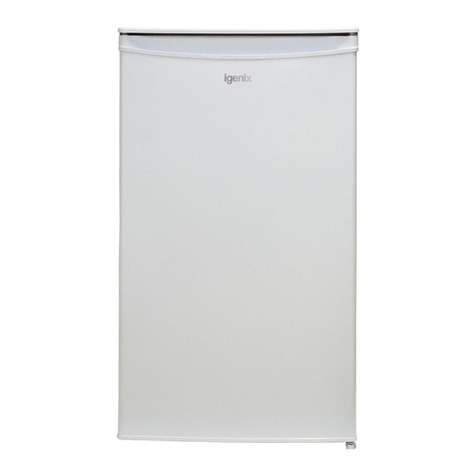
iGenix
iGenix IG3960 User manual
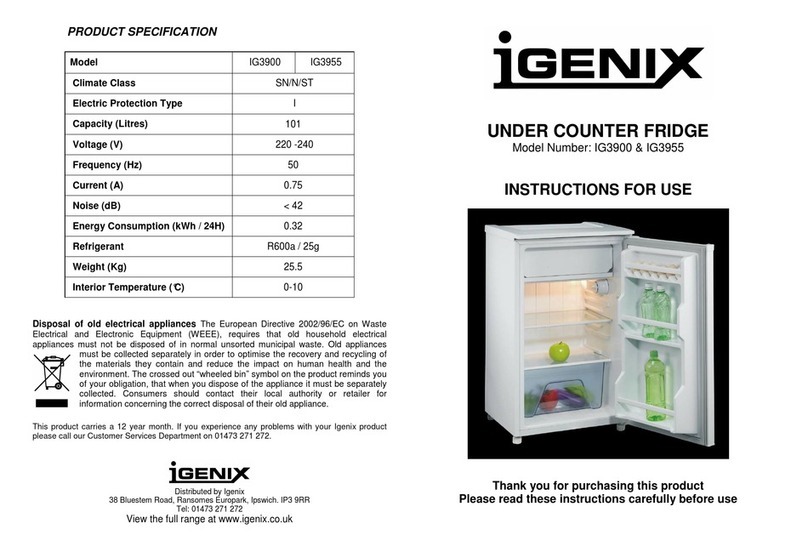
iGenix
iGenix IG3900 User manual
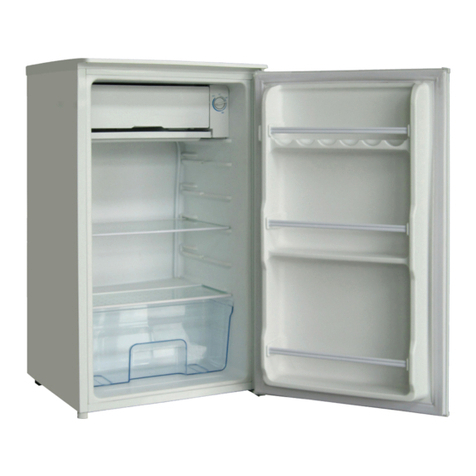
iGenix
iGenix IG3920 User manual
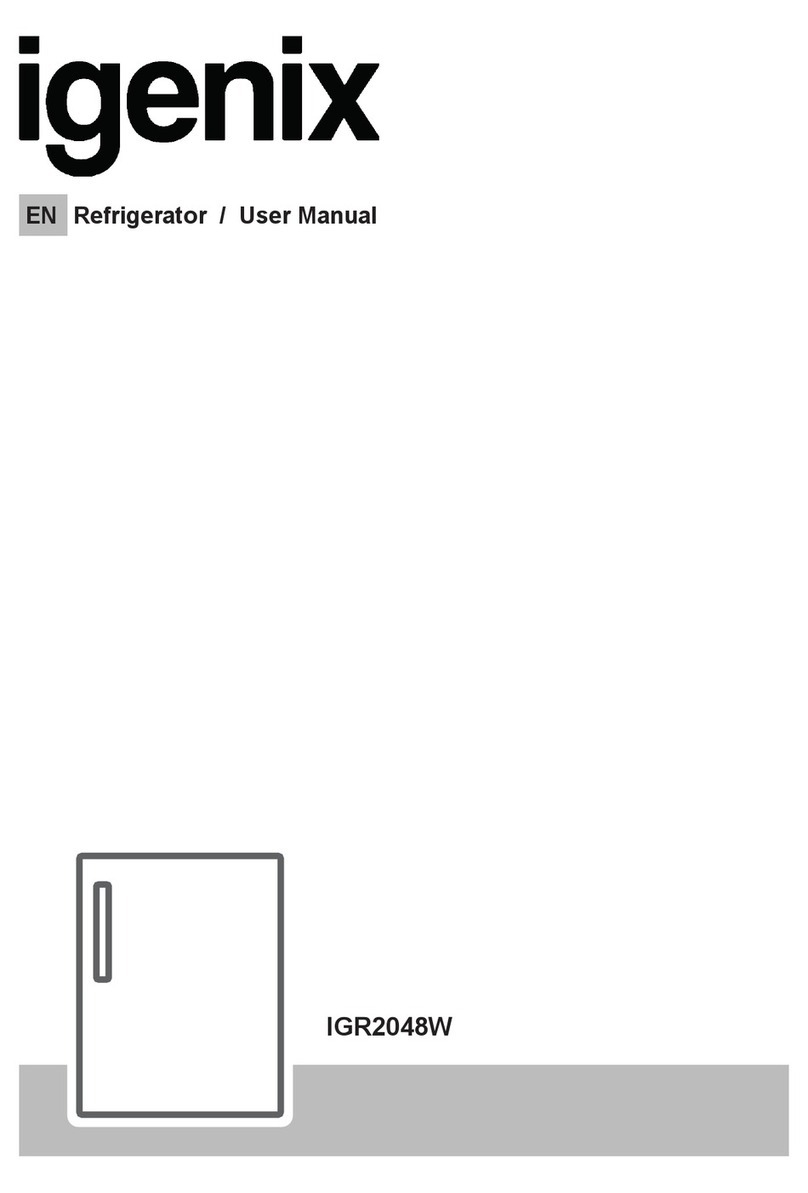
iGenix
iGenix IGR2048W User manual
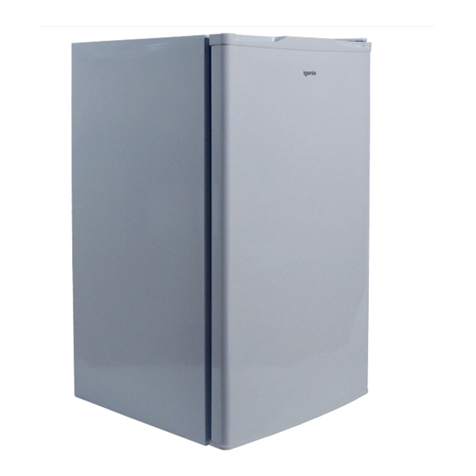
iGenix
iGenix IG348R User manual
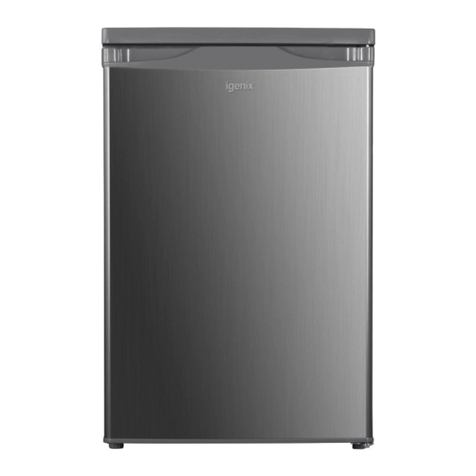
iGenix
iGenix IG255X User manual
Popular Refrigerator manuals by other brands
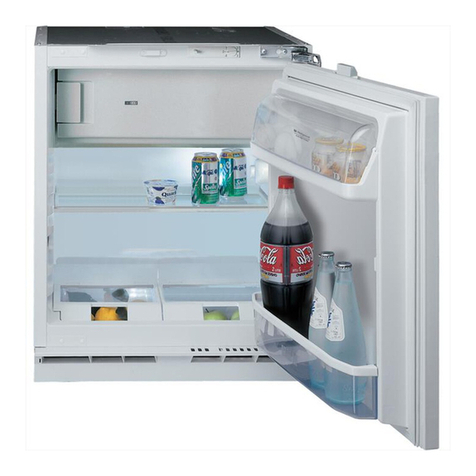
Hotpoint Ariston
Hotpoint Ariston BTSZ 16 /HA Series operating instructions
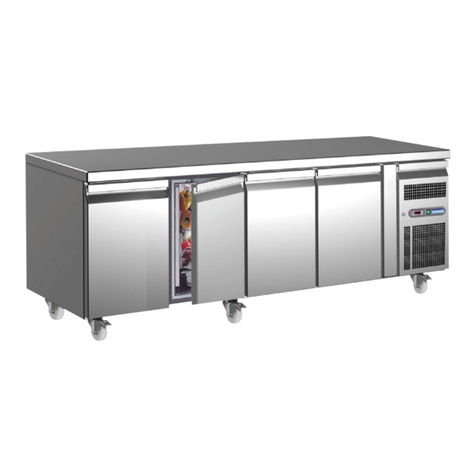
Polar Refrigeration
Polar Refrigeration G596 instruction manual
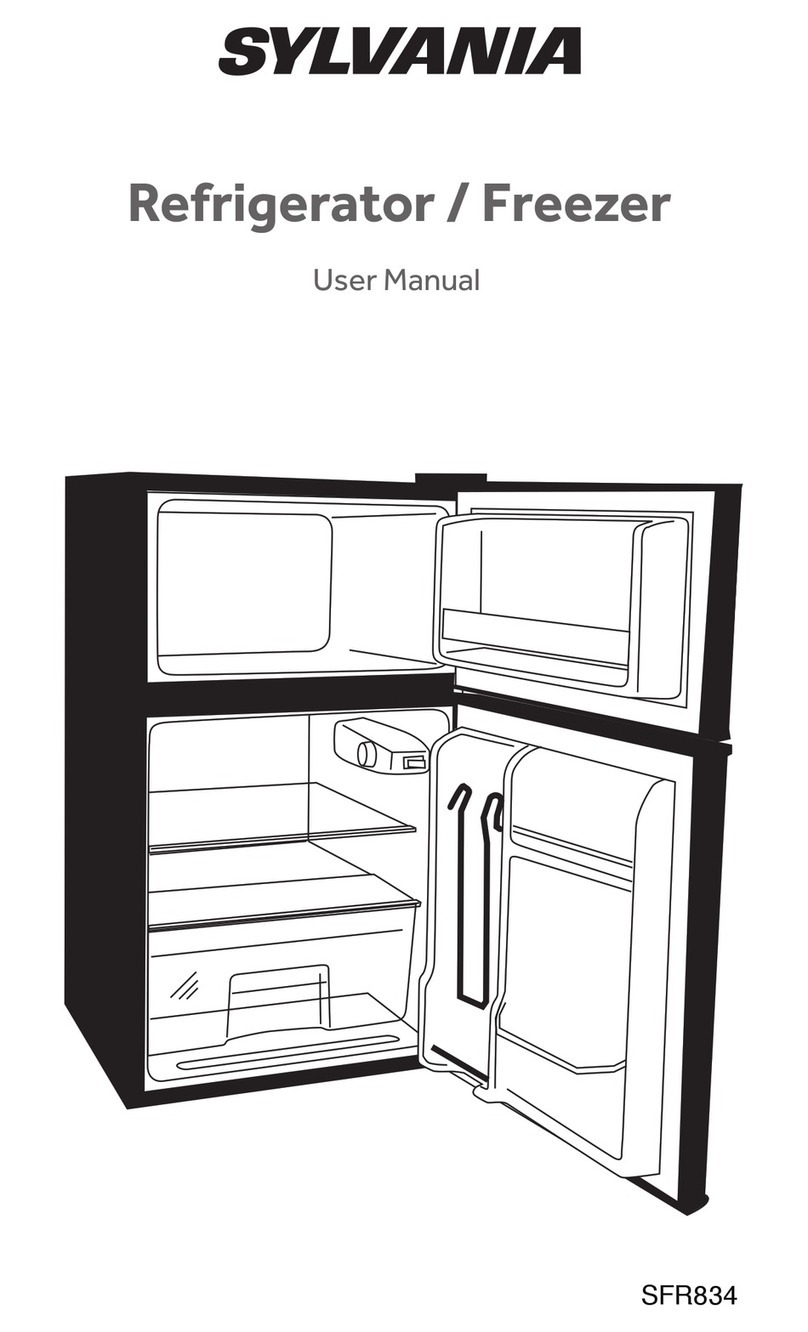
Sylvania
Sylvania SFR834 user manual
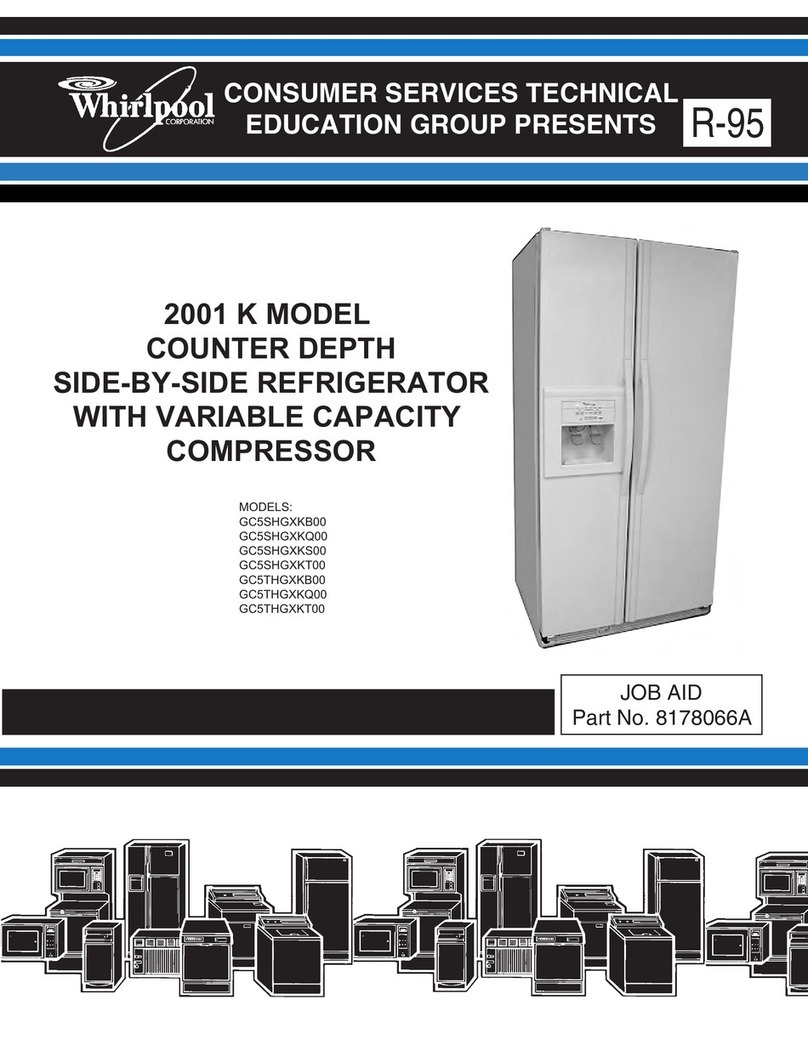
Whirlpool
Whirlpool GC5SHGXKB00 Service manual
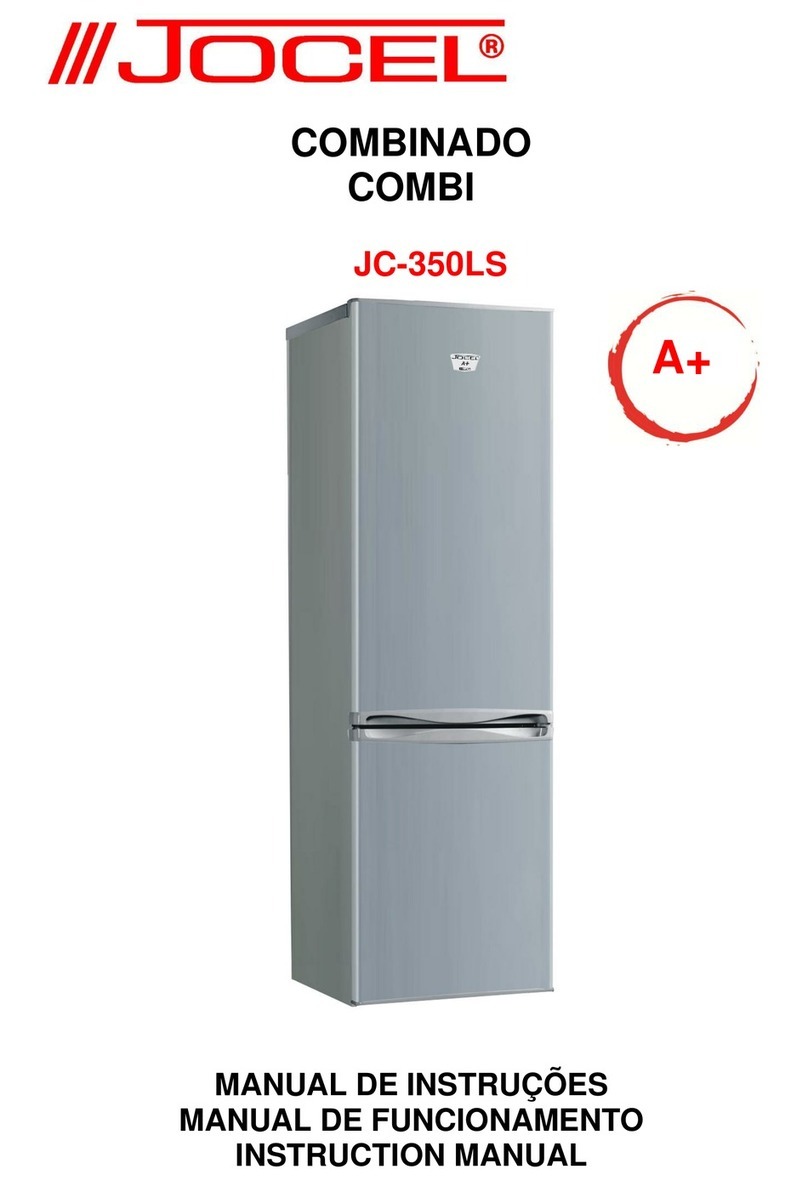
Jocel
Jocel JC-350LS instruction manual
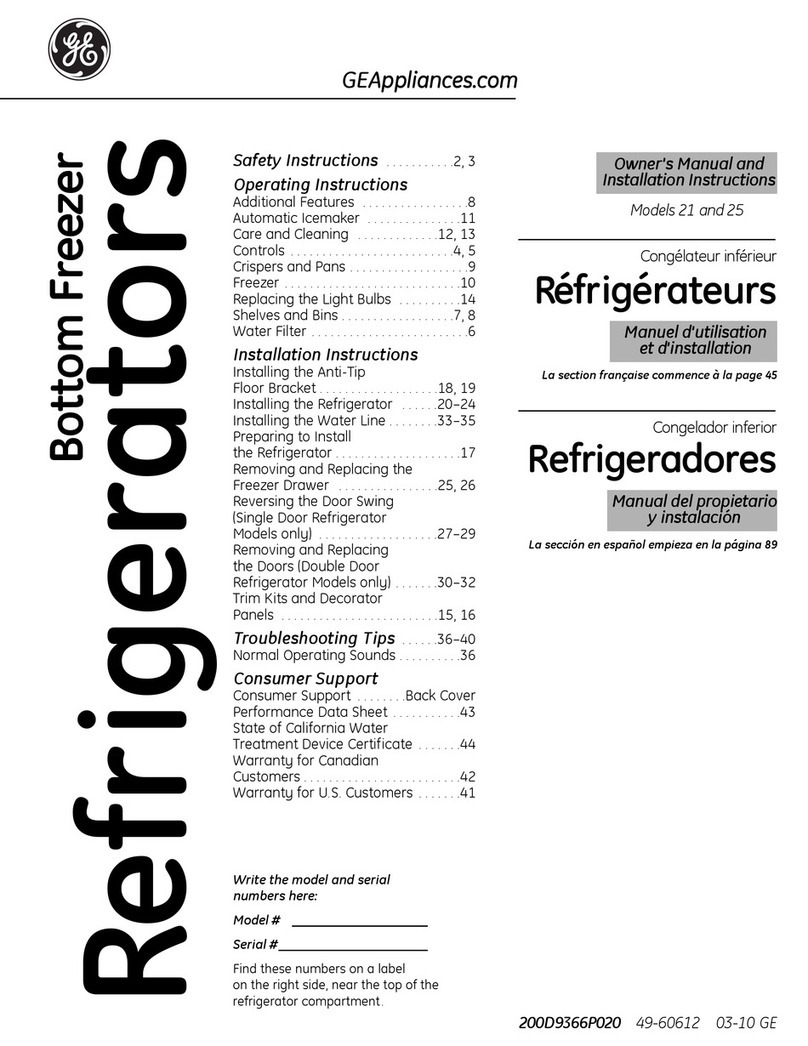
GE
GE 200D9366P020 Owner's manual and installation instructions
